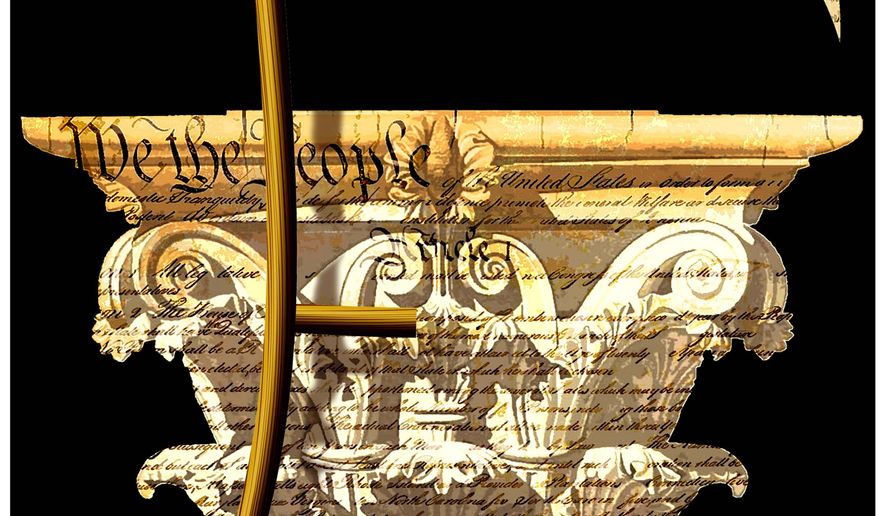OPINION:
There’s been loose talk over America’s ideological divide becoming so bitter that it could lead to armed conflict.
A Democratic congressman quipped that if gun owners resisted with force his proposal to confiscate rifles, it would be a “short war” because the government has nuclear weapons. Right. The feds are going to nuke Texas.
The congressman (Eric Swalwell of California) has since taken a good amount of flak for his statement, which he said was a joke.
In any case, talk of violence should be chilled. Anyone hoping our current cold civil war of values turns hot should dig up a copy of “Gone with the Wind” or tour the Gettysburg battlefield, where 50,000 Americans in blue and gray were either killed, wounded or went missing over three days, with some maimed for life and others later dying of their wounds.
Or perhaps they should visit nearby Antietam, Maryland (aka the battle of Sharpsburg), where the single bloodiest day in American history took place, with about 23,000 casualties, plus many more deaths from disease in the days following the battle.
In “Gone with the Wind,” a clueless bunch of Southern young men at a party cheer the onset of war as if it were a glorious adventure. By the film’s end, the hospital scenes amid the devastation of Atlanta bear grim witness to war’s reality.
The best outcome of raising consciousness over war’s devastation is not to turn pacifist; it’s finding renewed respect and appreciation for those who serve sacrificially in the armed forces so we can live peaceful lives.
All this said, we truly are in the midst of a cold civil war in which two very different visions of America are fighting on other battlefields, such as courtrooms, legislatures, college campuses and in the media. Not to mention dining room tables and social media. Central to the struggle is how we view the U.S. Constitution.
On one side are conservatives. They revere the Constitution as a peerless check on government power that should be changed only with broad social acceptance and only through an orderly, difficult process. They see the document through the lens of the Declaration of Independence, which states that “We hold these truths to be self-evident, that all men are created equal, that they are endowed by their Creator with certain unalienable Rights.”
This means that natural rights originate with God, not government, which cannot create them and has no right to abridge them.
On the other side are progressives, who believe in the living Constitution. This is the idea that the original document was so flawed that it should change rapidly with the times, with or without amendments. The primary method is having the courts rewrite it in ways that legislators — and the people who voted for them — never intended.
As Claremont Review of Books Editor Charles R. Kesler notes in Hillsdale College’s October “Imprimis” edition, the idea of the “living Constitution” arose with Woodrow Wilson, the most important progenitor of progressivism.
“Wilson called the spirt of the old Constitution Newtonian, after Isaac Newton, and that of the new Constitution Darwinian, after Charles Darwin. By Darwinian, Wilson meant that instead of being difficult to amend, the liberal Constitution would be easily amenable to experimentation and adjustment.”
In practice, as Mr. Kesler puts it, “while keeping the outward forms of the old Constitution, the idea of a living Constitution would change utterly the spirit in which the Constitution was understood.”
In the hands of progressive judges, the Constitution is an engine for social change. Instead of being a check on government power, it was and is seen as a blank check for the liberal agenda.
Since the middle of the 20th century, liberal courts have wielded the Constitution like a scythe. They righted some wrongs, such as ending school segregation through Brown v. Board of Education (1954).
But they also warred against elements that stand in the way of the growth of the state: Natural marriage; laws against taking innocent life in the womb; due process for property rights; the rule of law regarding immigration; religious liberty (they misread the First Amendment as ensuring freedom from religion, not of); the right of communities to ensure a minimal level of decency, and the Second Amendment’s right to bear arms. Some of this is being righted by the current court, albeit we have a long way to go.
Meanwhile, goons of the progressive left continue to employ violence and censorship against opponents while the media pretend that any dissenters from the liberal agenda are consumed by “hate” and “white supremacy.”
Standing athwart the current conflict is President Trump, whose policy victories, caustic style and taunting of the ruling elites have made him a lightning rod. Given all this, it’s now nearly impossible in America’s cold civil war to have civil conversations.
But it’s still better than a hot war on U.S. soil.
• Robert Knight is a contributor to The Washington Times. His latest book is “A Nation Worth Saving: 10 Steps to Restore Freedom” (djkm.org/nation, 2018).




Please read our comment policy before commenting.